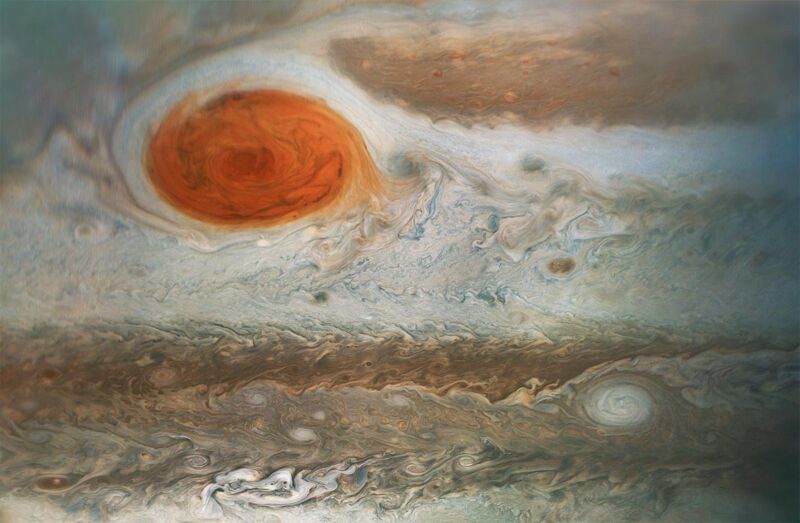
Σε αυτήν την απεικόνιση, το Mars Orbiter της NASA χρησιμοποιεί το τρυπάνι του για να δημιουργήσει ένα δείγμα πετρώματος στον Άρη. Πίστωση: NASA/JPL-Caltech
Mars’ ancient climate. The diverse range of samples collected by Perseverance, including igneous and sedimentary rocks, will enable scientists to better understand the history of Jezero Crater and the water cycle that shaped Mars’ surface and interior.
The rover continues its hunt for rocks worthy of bringing to Earth for further study.
NASA’s Perseverance rover cored and stored the first sample of the mission’s newest science campaign on Thursday, March 30. With each campaign, the team explores and studies a new area. On this one, the rover is exploring the top of Jezero Crater’s delta. Perseverance has collected a total of 19 samples and three witness tubes, and it recently deposited 10 tubes as a backup cache on the Martian surface as part of the NASA-ESA (European Space Agency) Mars Sample Return campaign.
Scientists want to study Martian samples with powerful lab equipment on Earth to search for signs of ancient microbial life and to better understand the water cycle that has shaped the surface and interior of Mars.

This image shows the rocky outcrop the Perseverance science team calls Berea after the NASA Mars rover extracted a rock core and abraded a circular patch. The image was taken by the rover’s Mastcam-Z instrument on March 30, 2023. Credit: NASA/JPL-Caltech/ASU/MSSS
Cored from a rock the science team calls “Berea,” this latest sample is the 16th cored rock sample of the mission (there are also samples of regolith – or broken rock and dust – as well as Mars atmosphere; read more about the samples). The science team believes Berea formed from rock deposits that were carried downstream by an ancient river to this location. That would mean the material could have come from an area well beyond the confines of Jezero Crater, and it’s one reason why the team finds the rock so promising.
“The second reason is that the rock is rich in carbonate,” said Katie Stack Morgan, deputy project scientist for Perseverance at NASA’s Jet Propulsion Laboratory in Southern California. “Carbonate rocks on Earth can be good at preserving fossilized lifeforms. If biosignatures were present in this part of Jezero Crater, it could be a rock like this one that could very well hold their secrets.”
Αυτό το κινούμενο σχέδιο δείχνει το ρόβερ Mars Advances της NASA να συλλέγει ένα δείγμα πέτρας από μια προεξοχή που η επιστημονική ομάδα αποκαλεί “Περαία” χρησιμοποιώντας ένα τρυπάνι στο άκρο του ρομποτικού του βραχίονα. Οι εικόνες καταγράφηκαν από μία από τις μπροστινές κάμερες κινδύνου του rover. Πίστωση: NASA/[{” attribute=””>JPL-Caltech
A Climate Puzzle
One big puzzle is how Mars’ climate worked back when this area was covered with liquid water. Because carbonates form due to chemical interactions in liquid water, they can provide scientists a long-term record of changes in the planet’s climate. By studying the carbonate in the Berea sample, the science team could help fill in the gaps.
“The Berea core highlights the beauty of rover missions,” said Perseverance’s project scientist, Ken Farley of Caltech in Pasadena. “Perseverance’s mobility has allowed us to collect igneous samples from the relatively flat crater floor during the first campaign, and then travel to the base of the crater’s delta, where we found fine-grained sedimentary rocks deposited in a dried lakebed. Now we are sampling from a geologic location where we find coarse-grained sedimentary rocks deposited in a river. With this diversity of environments to observe and collect from, we are confident that these samples will allow us to better understand what occurred here at Jezero Crater billions of years ago.”

This image shows the rock core from Berea inside the drill of NASA’s Perseverance Mars rover. Each core the rover takes is about the size of a piece of classroom chalk: 0.5 inches (13 millimeters) in diameter and 2.4 inches (60 millimeters) long. Credit: NASA/JPL-Caltech/ASU/MSSS
With this latest sample stored safely in a sample tube in the rover’s belly, the six-wheeler will continue to climb Jezero’s sedimentary fan toward the next bend in the dry riverbed, a location the science team is calling “Castell Henllys.”
More About the Mission
A key objective for Perseverance’s mission on Mars is astrobiology, including caching samples that may contain signs of ancient microbial life. The rover will characterize the planet’s geology and past climate, pave the way for human exploration of the Red Planet, and be the first mission to collect and cache Martian rock and regolith.
Subsequent NASA missions, in cooperation with ESA, would send spacecraft to Mars to collect these sealed samples from the surface and return them to Earth for in-depth analysis.
The Mars 2020 Perseverance mission is part of NASA’s Moon to Mars exploration approach, which includes Artemis missions to the Moon that will help prepare for human exploration of the Red Planet.
JPL, which is managed for NASA by Caltech, built and manages operations of the Perseverance rover.

“Ερασιτέχνης διοργανωτής. Εξαιρετικά ταπεινός web maven. Ειδικός κοινωνικών μέσων Wannabe. Δημιουργός. Thinker.”


